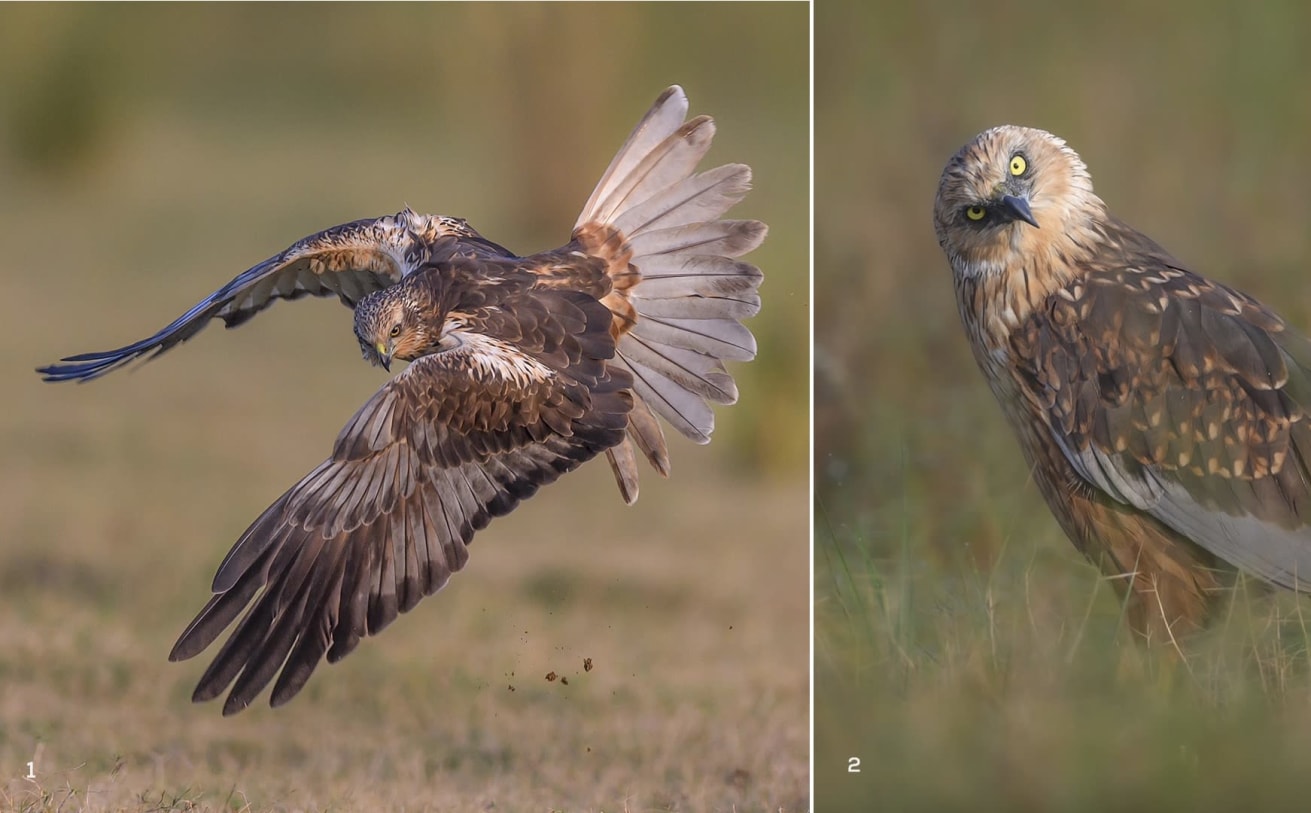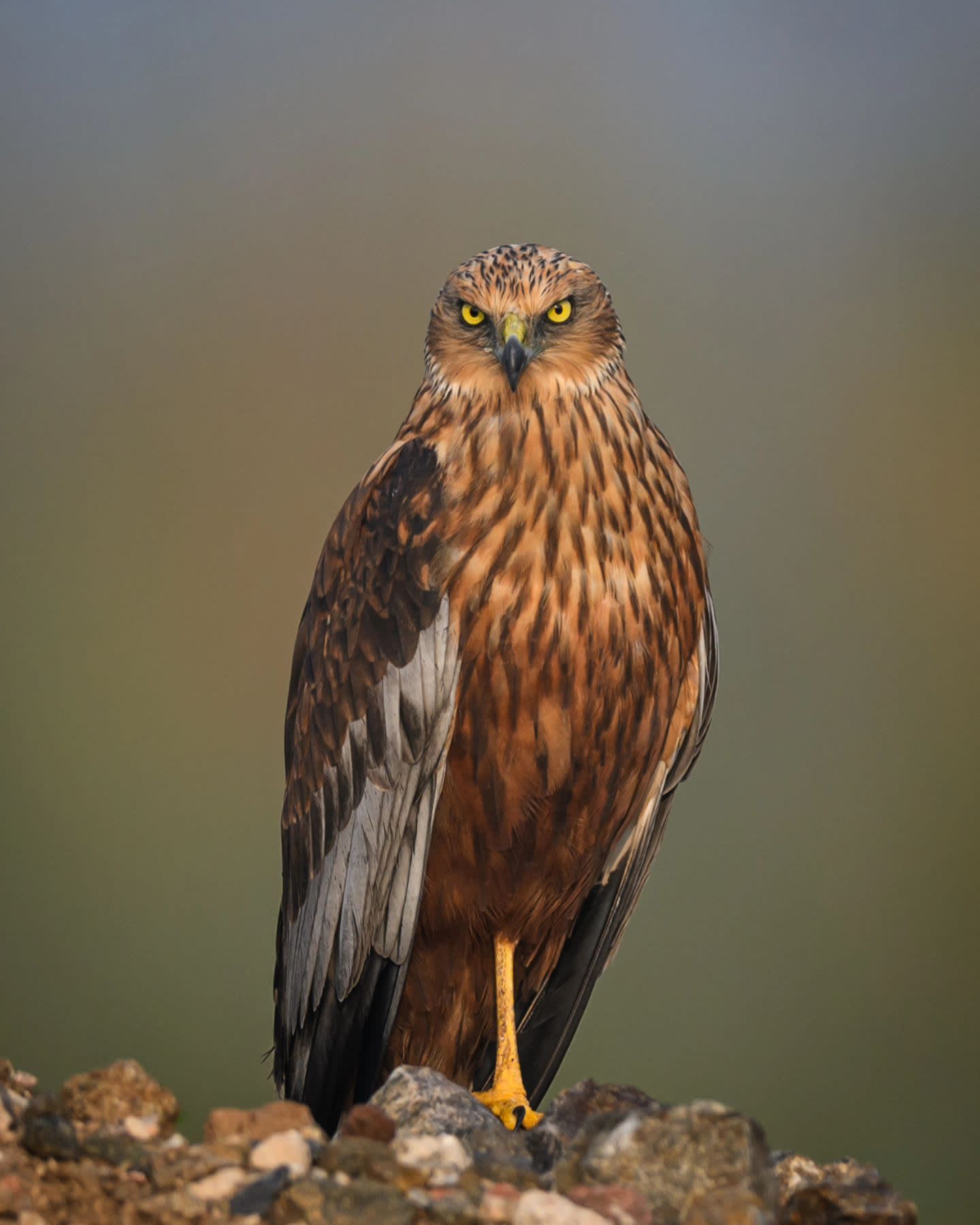 Listen to this article
•
15:34 min
Listen to this article
•
15:34 min
Walk along a bundh around a waterbody, be it a jheel, tank, swamp or lake, in early winter. On the water, waterfowl, like ducks and coots, huddle in their hundreds, soaking in the early sun. Pause and listen. There’s a distant rippling sound, getting louder by the second, and soon it sounds like a giant gargling. And on the water, you’ll see the waterfowl have begun frantically taking off, or scampering across (especially coots), wings and feet splashing and beating the water in a flurry. And you know, their nemesis, the western marsh harrier (Circus aeruginosus) has arrived — and in a typically indolent manner, is doing the rounds, looking for its breakfast.
It’s easy enough to spot this bird. If female, it is rather like a black kite, but with a rounded tail. It is dark brown all over, save for a creamy hood over its head (like a bandit’s stocking), matched by similar coloured patches — like epaulettes (shoulder pads) — on the leading edges of its wings and shoulders. If it is a male, it will be slimmer, dark brown with a rufous head, neck, and breast, a silvery grey tail, and silvery grey black-tipped wings. Size estimates of this harrier range from 43-59 cm, and the ladies may weigh in at 850 gm, and are overall larger than their mates.
Cover Photo: The western marsh harrier is one of six harrier species found in India. It is a winter migrant to the country. Photo: Sriram Udhayab
Marsh harriers are winter migrants all over the Indian subcontinent, arriving by end-August and leaving by the following April. They spend most of their time quartering waterbodies, their wings angled in a shallow V above their bodies, or else they perch on suitable mounds, posts, or trees, their glittering eyes keeping a watch. Virtually anything is grist to their mill: birds, both grassland (like larks and roller jays) and wetland (ducks and coots), reptiles, small mammals, insects (caught clumsily on the wing, or after being stalked on the ground), frogs, and carrion.
What is a little chilling, and thrilling, is watching one on the hunt. After panicking a thousand waterfowl, the western marsh harrier will quarter up and down the waterbody, oh so casually, checking for any bird that is late or slow to escape. The harrier will brake, corkscrew down for a closer look, and if satisfied, drop down on its victim. If in doubt, it might drop low, hover against a strong breeze, checking out its prey before pouncing. It never appears to be in a hurry —like a stooping falcon or eagle — and there’s a deadly, cool casualness in its manner, contrasting with the frantic hullaballoo it has caused amongst its victims. Its strategy is simple: check out the flock, cause wholesale panic, pick a weakling or slowcoach, or isolate a victim and drop down on it. If necessary, for example, when the victim struggles violently, as some ducks do, attempt to drown it.

The marsh harrier has always reminded me of a gangster, and it really does seem to be one as it will not hesitate to rob other raptors — even the magnificent Pallas’s fish eagle or a black-necked stork — of their kills. Sometimes, though, it falls victim and is robbed. But it’s also earned a reputation for filching birds, especially ducks, shot by hunters, turning up after hearing gunshots, so it can pick up an easy meal! It has been recorded taking a sarus crane chick as well, and the birds will fight one another over food if necessary.
The western marsh harrier nests all over Europe, northwest Africa, Central Asia, parts of the Middle East, and the mountainous regions of Baluchistan in Pakistan. While mention has been made of birds nesting in Kashmir, these records are unconfirmed. The birds pair for a season, or might stay together much longer. The nest, made of twigs, grass, and reeds, is built on the ground, in a reed bed, and is entirely the work of the female. She lays 3-8 eggs, which will hatch in around five weeks, and the young take another month or so to fledge.
Keoladeo National Park in Bharatpur, Rajasthan, as well as Sultanpur National Park in Haryana, are two “addas” where I have met these bindas gangsters every winter I’ve been there, though any large waterbody should host this species in winter. As many as 100 birds have been found roosting together in Bharatpur, which you could say is quite a gathering of the clan. The birds will roost in tall grasslands, or if they feel they are vulnerable, amidst floating rafts of water hyacinth. Though they have been labelled as “least concern” in the IUCN Red Book, habitat destruction, the use of pesticides, and poaching are looming threats to their well-being. The drainage of wetlands and pesticide and chemical contamination of waterbodies have been especially singled out as the main threats to these birds.
The western marsh harrier may not exude an eagle’s sheer apex predator power, but it is no less deadly for its insouciant manner of hunting. Certainly, it has been well-named, because harrying is what this gangsta bird does best.









